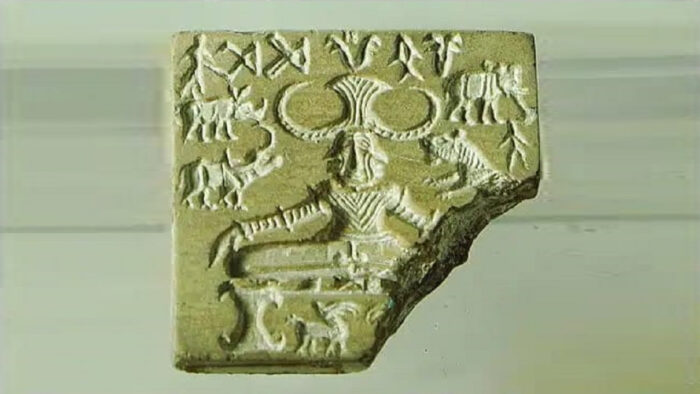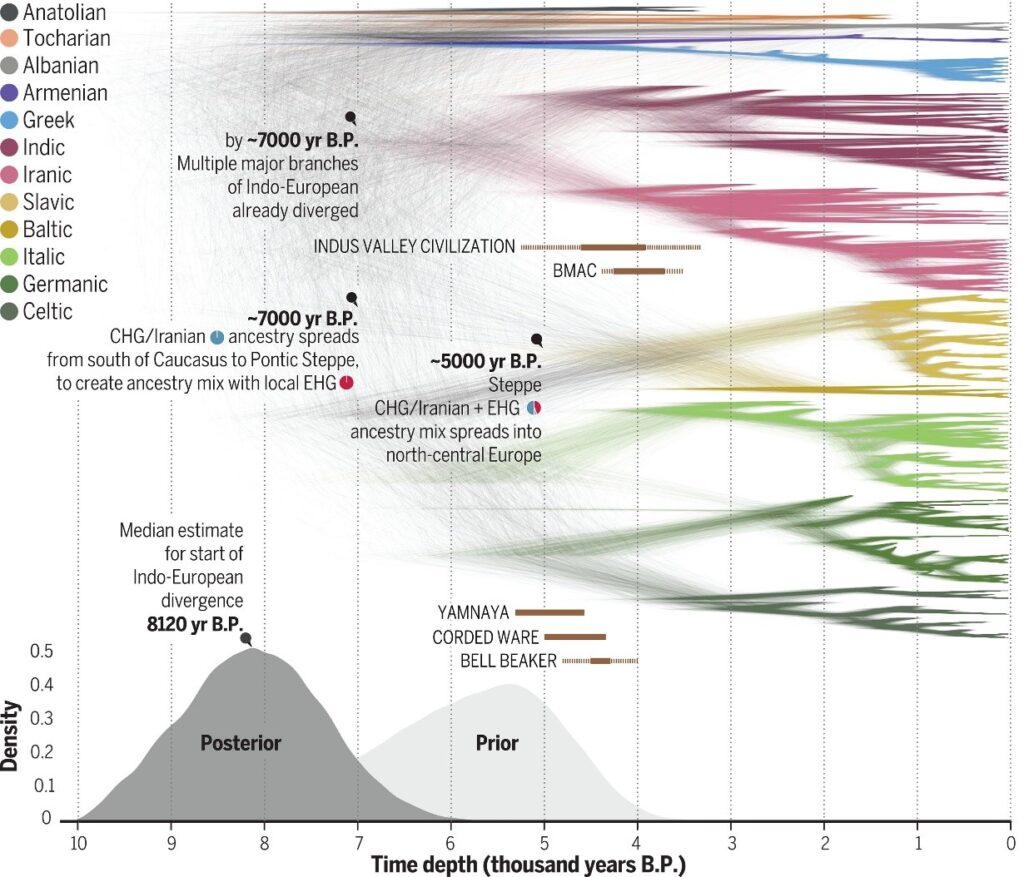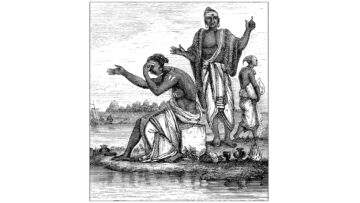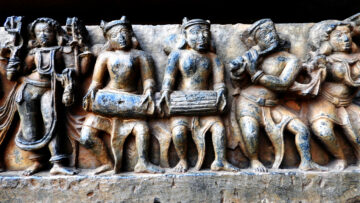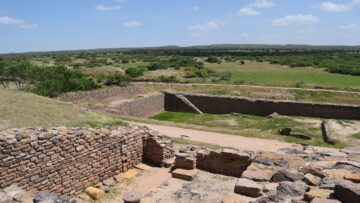The Indus Valley Civilization, a remarkably ancient and highly advanced society that thrived in the northwestern regions of the Indian subcontinent more than 4,000 years ago, stands as a testament to human ingenuity. Boasting remarkable achievements in urban planning, architecture, and trade, this civilization has intrigued historians and archaeologists alike, yet one of its most enduring mysteries revolves around its enigmatic script.
Over the years, researchers have found many small seals with the Indus script. These seals usually have symbols on top and animal depictions below, found in a wide area including present-day India, Pakistan, and trade routes to Iraq, highlighting the civilization’s vast influence.
Despite various attempts to decipher the Indus Valley script, no one has achieved complete success. Early efforts focused on finding connections with known languages, such as Sanskrit, Dravidian, or Sumerian, but no conclusive links were established. The lack of any bilingual texts further complicates the problem. Nevertheless, hope may be on the horizon, as cryptographer Yajna Devam claims to have deciphered the Indus script using a novel methodology, incorporating cryptographic tools. [1]
A cryptogram is a message in a known language encoded in an unknown script. The most notable use of cryptography in our everyday life is through digital translator tools.The concept of using cryptography to interpret foreign languages originated over 70 years ago with Warren Weaver, a pioneer in machine translatior, proposed using cryptography to interpret foreign languages. In a letter in 1947 to the mathematician Norbert Wiener, he wrote, “One naturally wonders if the problem of translation could conceivably be treated as a problem in cryptography. When I look at an article in Russian, I say: ‘This is really written in English, but it has been coded in some strange symbols. I will now proceed to decode.” [2]
Modern cryptography has been instrumental in solving historical mysteries spanning centuries. Notable examples include deciphering ciphers from Trithemius’ Steganographia, Marie-Antoinette, Maximilian II, Papal ciphers, the Rohonc Codex, Klansmen, 20th-century serial killers, and ciphers from various wars such as the American Revolutionary War, American Civil War, War of 1812, World War I, World War II, and the Biafran War. [3]
Earlier attempts to decipher the Indus script relied on a logographic approach, assuming each sign represented a single word. The problem with this method is its non-falsifiability, as without bilingual inscriptions, its accuracy cannot be proven. As linguist Steven C Bonta points out, “Attempts to interpret the signs using assumptions about graphology as a starting point (i.e., assigning to signs word or sound values that coincide with what the signs supposedly look like, and then trying to force them into intelligible readings, before examining patterns of distribution) are enlightened guesses at best, and cannot be regarded as falsifiable evidence per se.” [4]
The first step to solve a cryptogram is to guess the language itself. If the language selected for decryption is wrong, the cryptogram becomes unsolvable, complicating efforts to decode the ancient script. Luckily, this is not a problem in this case as use of Sanskrit language allowed Yajna Devam to successfully decipher the Indus script.
Some may question whether this approach is biased, as the language was guessed before solving. What if the script is written in a different, unknown language? Fortunately, the answer to this question comes from none other than Claude Shannon, the Father of Information Theory, and a renowned mathematician. Yajna Devam’s decipherment work is built on Shannon’s research, providing valuable support and validation for the approach used in deciphering the Indus script. In his groundbreaking work, A Mathematical Theory of Cryptography, he explained that a sufficiently long cryptogram with ~50 letters has a unique solution. [5]Yajna Devam has also provided a mathematical proof of the correctness of his decipherment. [6]
Yajna Devam’s decipherment can also be verified in a social context. He interprets the famous Dholavira sign board as “Diamond Gem Entrance”. According to academic Simon Mitton, “The prehistory of the diamond trade suggests that the first discoveries of these shiny grains were made between 2500 and 1700 BCE by the Indus Valley Civilization in the Bronze Age”. [7]
(Figure 1: Credit: Wikipedia – Ten Indus characters from the northern gate of Dholavira, dubbed the Dholavira Signboard)
The decipherment of the Indus script is a politically & emotionally charged topic both within and outside academia. It is intertwined with controversial Indo-European origin theories, leading to heated debates with bad faith assumptions and ad-hominem attacks. As Indologist Edwin Bryant notes in his 2001 book, “In a progressive academic context, differences of opinions, however radical, challenge scholars to constantly reexamine their views, assumptions, and methods. This is the lifeline of healthy scholarship. But in the present academic climate in the subcontinent, it has become increasingly difficult, particularly for Indian scholars, to discuss the pre‐history of the subcontinent in a rational, objective way without becoming associated with the ideologies that are immediately correlated with pro‐ or contra stances for or against the Indigenous Aryan issue.” [8]
The prevailing academic consensus hinders the acceptance of Yajna’s work, which contradicts the belief that the Indus Valley civilization predates Indo-Aryan languages. However, a recent paper by linguists and geneticists proposes that Indic languages emerged before the Indus civilization. To solve the problem, it is crucial to foster an open-minded discussion rather than resorting to gatekeeping in the name of academic consensus. [9]
(Figure 2: Credit: Paul Heggarty et al (2023) – DensiTree showing the probability distribution of tree topologies for the Indo-European language family.)
There is an interesting parallel to this, Linear B inscriptions which were found on a series of baked clay tablets at Knossos, Crete. When the archaeologist Arthur Evans unearthed these tablets, he initially assumed that Linear B represented a pre-Greek Minoan language, a view shared by the majority of the academic community. However, Michael Ventris’s groundbreaking decipherment in 1951 challenged this prevailing notion, revealing that Linear B was, in fact, Greek. Working alongside John Chadwick, Ventris dedicated considerable efforts, ultimately completing the decipherment between 1951 and 1953. Notably, the decipherment of Linear B was a remarkable feat, accomplished without the aid of any bilingual text, using a method akin to modern cryptography (Before collaborating with Ventris, John Chadwick attempted to decipher Linear B using cryptographic methods).The acceptance of Ventris and Chadwick’s findings was not immediate or universal.[10][11]
In his book, The Decipherment of Linear B, Chadwick elucidates, “Cryptography is a science of deduction and controlled experiment; hypotheses are formed, tested and often discarded. But the residue which passes the test grows and grows until finally there comes a point when the experimenter feels solid ground beneath his feet: His hypotheses cohere, and fragments of sense emerge from their camouflage. The code ‘breaks’. It has contributed a new weapon to the student of unknown scripts. It is now generally known that any code can in theory be broken, provided sufficient examples of coded texts are available. “ [12]
It is this weapon which Yajna Devam has unleashed on the gatekeepers of Indology. His work holds significant value in this field and deserves examination by scholars with an open mind. By embracing this approach, we can delve deeper into the mysteries of ancient civilization and the development of languages, paving the way for new insights and understanding.
References
[1] Yajnadevam. 2022. Deciphering Indus script as a cryptogram. www.academia.edu. https://www.academia.edu/78867798/Deciphering_Indus_script_as_a_cryptogram
[2] Warren Weaver and Norbert Wiener correspondence. 1947. https://is.muni.cz/el/phil/jaro2016/PLIN041/um/Weaver-1947-original.pdf
[3] Craig P. Bauer. (2023). The new golden age of decipherment.Cryptologia. 47:2, 97-100.https://doi.org/10.1080/01611194.2023.2170158
[4] Bonta, Steven C. 2010. “THE INDUS VALLEY SCRIPT: A NEW INTERPRETATION (A Semiologic Approach Showing Distributional Evidence and Markedness as Tools for Interpreting Patterned Texts in the Harrapan Corpus.).” Penn State University – Altoona College.
[5]Shannon, C.E. (1945) A Mathematical Theory of Cryptography. Bell System Technical Memo MM45-110-02, September 1. https://evervault.com/papers/shannon.pdf
[6] Yajnadevam. 2023. Cryptogram Theorem and Proof. www.academia.edu.https://www.academia.edu/s/c30e36f13d
[7] Mitton, Simon. 2020. “Diamond in the Mantle.” Chapter. In From Crust to Core: A Chronicle of Deep Carbon Science, 282–302. Cambridge: Cambridge University Press. https://doi.org/10.1017/9781316997475.016
[8] Bryant, Edwin. ‘Aryan Origins and Modern Nationalist Discourse’. The Quest for the Origins of Vedic Culture: The Indo-Aryan Migration Debate (New York, 2001; online edn, Oxford Academic, 1 Nov. 2003).https://doi.org/10.1093/0195137779.003.0014
[9] Paul Heggarty et al. (2023). Language trees with sampled ancestors support a hybrid model for the origin of Indo-European languages.Science381,eabg0818. https://doi.org/10.1126/science.abg0818
[10]The Life of John Chadwick. Faculty of Classics.https://www.classics.cam.ac.uk/research/projects/mycep/decipherment/chadwick
[11] 2017. “Part 1 The Decipherment of Linear B”. Galanakis, Ioannis, Anastasia Christophilopoulou, and James Grime, eds. Codebreakers and Groundbreakers. Fitzwilliam Museum.https://www.repository.cam.ac.uk/items/0b429ea0-a183-415f-9f7a-8840cccdfd41
[12] Chadwick, John. 2014. The Decipherment of Linear B. 2nd ed. Canto Classics. Cambridge: Cambridge University Press. https://doi.org/10.1017/CBO9781107589032
Disclaimer: The opinions expressed in this article belong to the author. Indic Today is neither responsible nor liable for the accuracy, completeness, suitability, or validity of any information in the article.

